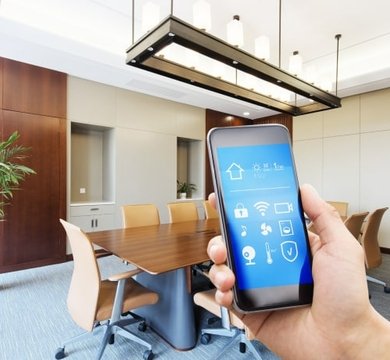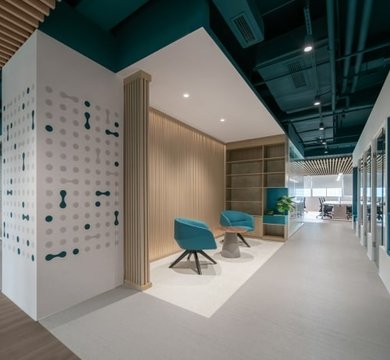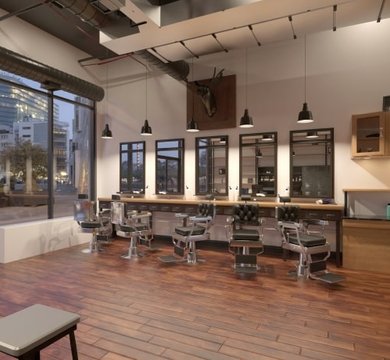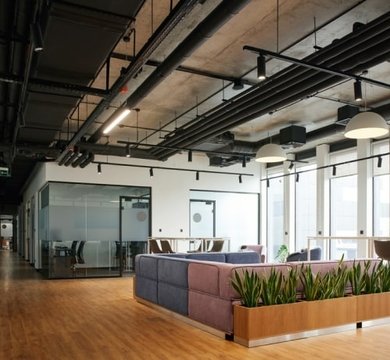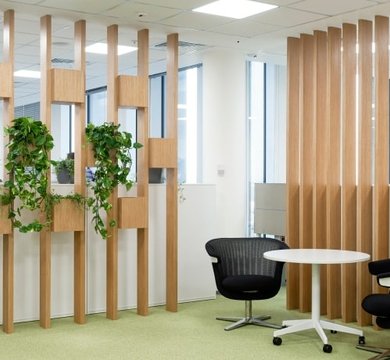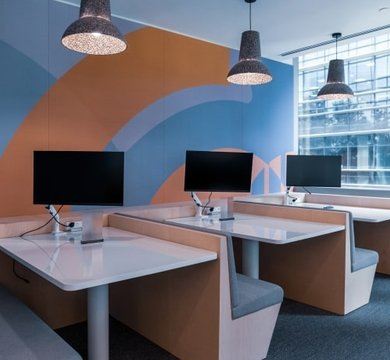Are you ready for another office refurbishment acronym? Everybody is talking about ABW. It stands for activity based working and it’s a style of operation that has risen to prominence post pandemic.
What are the benefits of ABW? In this article, we explore why businesses are shifting to ABW, what the perks of activity based working are and how MPL’s shop fit fitters can create for you an activity based working office design.
What is Activity Based Working?
Understanding an activity based working definition can be helped along by this analogy. Imagine a really good, all-inclusive buffet on holiday. You move around the food hall, stopping at the places that suit you best. Omelette? Head for the egg station. Steak, medium rare? Make a beeline for the live grill. On a health kick? It’s got to be the salad bar. Now transport this idea to the office. Activity based working disposes of one assigned desk per person where you perform all tasks in favour of multiple workstations that are dedicated to a particular task, with staff moving freely between them.
What Are The Benefits Of Activity Based Working?
The benefits of activity based working benefits are numerous. Many of the MPL office refurbs in London and across the UK allow businesses to:-
- Become an agile office with ease: there’s a huge cross over between agile working and activity based working but consider ABW as the framework in which agile working sits. The office designs from MPL allow the transfer to agile working to become a seamless exercise.
- Work with more efficiency & effectiveness: with an activity based working office design, employees can better organise their time and tasks thanks to environments set up specifically for the jobs at hand. The benefit is two-fold too – with staff working better individually and collectively.
- Facilitate a flexible workforce: One of the biggest activity based working benefits is accommodating a dynamic workforce. Forgoing assigned desks in favour of workstations and zones suits flexible working patterns where not all of the workforce is under the same roof at the same time.
- Create a culture of collaboration: activity based working should increase interactions between departments and can even encourage staff to come into the office more, knowing they will find stimulating workstations to suit their mood or project.
- Reduce real estate costs: if a flexible workforce has left half of your desks empty at any one time, an activity based working office design can help you reduce your premises footprint and perhaps even downsize to a smaller, less expensive office.
- Improve employee health: we know a sedentary lifestyle is bad for our health and fixed desks do nothing for workplace mobility. Activity based working will encourage staff to move around and banish prolonged spells of sitting.
Common Examples of Activity Based Working
Activity based working identifies what tasks need completing, who might be carrying out those tasks and the tools they need to get the job done. Once these facts are gathered, a fit-for-purpose workstation or space is designed. A refit to accommodate ABW may include specific activity based furniture, new tech or a shift towards softer interior design. Some examples of activity based working include:
- Brainstorming rooms: boardrooms can be too stuffy and inhibit free thinking, therefore a brainstorming room offers a relaxed alternative. A digital whiteboard can become the focus, with modular desks on wheels that can be configured to suit the group. A refreshment station with a drinks fridge and coffee machine will elevate user comfort.
- Informal booths: if small meetings where employees gather to share digital documents are a frequent occurrence, booths are a good solution. They can be soundproofed for privacy, feature integrated USB points and plug sockets, and be fitted with a Bluetooth-enabled screen.
- Pods & quiet zones: a good activity based working office design also recognises employees will encounter focus-heavy tasks where peace is required. Individual pods and dedicated ‘quiet zones’ are a great addition, especially if you’re designing a neurodiverse-friendly office.
- Video conferencing rooms: a bespoke video conferencing room will balance light levels, acoustics, privacy and digital requirements with elements such as a big screen and an interior design that reflects the brand well on camera.
- Open plan kitchen: it may be the heart of the home but it can also be the hub of an office. Fresh kitchen ideas, such as open plan layout or American diner-style design, can draw staff in for informal gatherings and offer water cooler moments that boost a sense of belonging.
How Did We Get Here?
While it’s true that activity based working is really stepping into the spotlight now, it is not a new working practice. Architect Robert Luchetti was a pioneer of ‘activity settings’ as far back as 1983, while Erik Veldhoen first used the activity based working phrase in his 1994 book, The Demise of the Office, to describe a task-centric office set up.
Culture, Physical Space & Technology
Veldhoen's idea was a fairly radical one, aired during a time of very traditional office setups (we’d only just started to adopt the idea of open plan). More than just activity based furniture and a collection of work stations, Veldhoen believed activity based working represented a culture shift that also involved changing behaviour and adopting digital platforms, as well as reordering the built environment.
Is Activity Based Working The Best Solution Post Covid
Does activity based working work in a post pandemic world? The answer is an emphatic yes. Many companies are still battling to tempt employees back to the office so an enriching, compelling workplace needs to be created. Research by Veldhoen + Company in 2020 found a 17% increase in workplace satisfaction after companies transitioned to activity based working, so the switch will give people a reason to leave their homes.
What are important considerations for activity-based workplaces today?
Swapping to activity based working doesn’t happen overnight and there are a number of key fundamentals to comprehend. Here
are 7 considerations we apply to our office design solutions:-
- Consult with staff first: ask employees how they’d like to work and what they don’t like about their current office set up. It could be as simple as not having desks big enough to lay out large printed documents.
- Evaluate your current floorspace: MPL recommends a workplace audit to establish how space can be reconfigured using new internal walls, removing current structures and replanning areas.
- Prioritise common tasks: break down what tasks happen on a regular basis and create an activity based working office design around recurring events, such as team meetings, brainstorming sessions, video conferencing and presentations, for example.
- Consider occupancy: while the flexibility to manage our own working patterns is a huge positive for productivity, it can be a challenge to predict who will be in the office and when. Activity based working will need a degree of seating and occupancy management to ensure demand is met and no spaces are under-utilised.
- Think about acoustics: switching to activity based working may lead to more informal and breakout areas - you may need improved soundproofing or a number of booths and enclosed meeting rooms.
- Make sure your power, data & light matches requirements: the fluid nature of activity based working will change where people work and charge their devices. Ensuring there’s adequate plug sockets, charging points, task lighting and WiFi is critical.
- Design for the future: of all the activity based working benefits, being able to scale up (and down) your operations is one of the best. A task-based office is in a much better position to flex to different employee numbers and even shift with a change of business direction.
Is ABW The Future?
The most recent research study from the Office for National Statistics found “that during 2022, the proportion of workers both working at home and at their usual place of work (‘hybrid working’) has been rising, while the proportion of those working from home exclusively has fallen”.
It's a compelling report and if a fluctuating, hybrid workforce is the future, with people coming together for projects and meetings rather than the traditional 9-5, activity based working needs to be at the heart of company culture.
Summary
Activity based working has already proved itself in office settings, with early adopters enjoying better productivity, efficiencies, collaboration and staff retention. Success, however, relies on managers being willing to trust the process and see a ‘new normal’ of workstations and mobile staff, rather than fixed desks and little movement.
Businesses also need to be open to the fact that their activity based working office design may need tweaking on a regular basis. Aspects, such as contracts won, live projects, deadlines and employee numbers, will all affect what workstations are needed, with a process of rolling evaluation required.
MPL is happy to share its activity based working ideas and retail interior designs with you. Please get in touch to discuss your workplace future.



